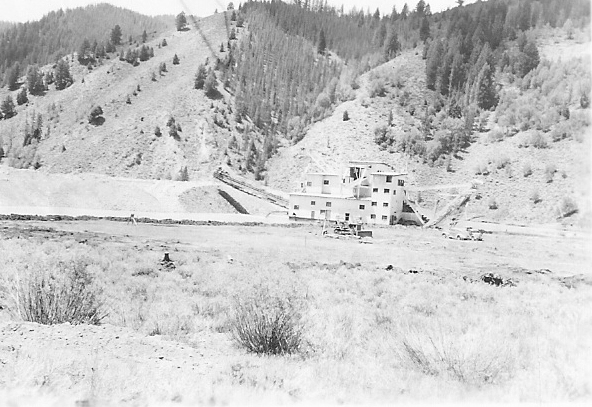This is an oral history summary from a 2008 interview with Challis resident Jim Bennetts, who worked in Stanley on ranches and mines during the early years of his life. Bennetts’ interview is stored within the oral history collection of the Stanley Museum.
Jim Bennetts was born September 3, 1934 in Challis, Idaho. His father had a ranching partnership with a man named Morgan Williams near Obsidian in the Sawtooth Valley. As part of this partnership, the Bennetts family would summer their cattle on land owned by Williams, and Williams would winter his cattle in Challis on land owned by the Bennetts.
Fun Fact: In the 1920s, Morgan’s father, Dave Williams, delivered mail for the residents of Stanley via his dog sled team in the winter.
Bennetts’ father worked part-time as a mechanic for the Forest Service while operating his cattle ranch. During these years a young Jim Bennetts would do odd ranching and farming jobs for both his father and other ranchers in the area. Most of these jobs involved working with cattle on horseback, but also irrigation and hay farming in the meadows along the Salmon River and its tributaries. During the haying season Bennetts primarily used teams of horses to pull equipment to rake and cut the grass. Sometimes he was lucky enough to use one of the few tractors that had made their way into the region by the late 1940s.
Bennetts spent almost the entirety of every summer from the 1940s-1950s in Stanley working on ranches or farming hay. He describes the town during this time period as “bare bones,” having only basic amenities. Stanley was full of simple log homes and few businesses, a far cry from the recreation powerhouse it is today. He states that the few businesses the town had were general stores, bars, and simple mechanic shops. The permanent population, according to Bennetts, floated around 30 people who would stay throughout the bitter winter.
Bennetts shared how being isolated in the mountains led to some issues of boredom among himself and the rest of the town. Gambling occurred in some of the backrooms of bars despite its illegal status in Idaho, because the isolation made enforcement difficult. Most weekends he would go out dancing in the bars and would participate in the Stanley Stomp when it occurred.
One night Bennetts said that he and a man named Henry Fleming wanted to make a night at the bar more exciting, so they both waited outside the doors in the dark and tripped the bar patrons into the street. This started a drunken brawl that most certainly made the night more interesting for young Jim and Henry.
When Bennetts was 17 he applied for a job with the Yankee Fork gold dredge during its last summer season of operation in 1951. Although he wouldn’t have normally been allowed to apply for the job before he turned 18, the foreman at the time, Jack Johnson, changed his age on the application to 18 in order for him to get the position. He began as a stern oiler for the machinery in the dredge but was later promoted to bow oiler. This was a more dangerous job but came with a substantial pay increase. During his season with the Yankee Fork dredge, Bennetts became acquainted with the owner of the operation, J.R. Simplot, who took a liking to him and offered him a job at another of his agricultural operations in Pocatello so that he could pay his way through school.

In the late 1950s, Bennetts joined the military and operated in Germany as part of one of the first missile crews in Europe. Upon finishing his tour, he returned home and began working as a firefighter out of Challis and became very acquainted with the Forest Service through this time period.
After serving as a firefighter for a few years, Bennetts went to law school and opened his own law firm after graduation. With his newly earned legal degree in property rights, he helped to preserve the buildings of Bayhorse ghost town. Bayhorse is a former mining district between Clayton and Challis and today is part of the Land of the Yankee Fork State Park. He also assisted in the establishment of an airport in Stanley, managing the purchase of land owned by the Piva familyas a site for the airport. Bennets was active in the negotiations to establish the SNRA, working to ensure the community of Stanley was treated fairly. He represented the community and their interests in court proceedings for land easements and the likes.
Jim Bennetts has an interesting life story and, like many other residents in the area, he lived a colorful life in the varying industries that existed in the region. His connection to the establishment of the SNRA and the conservation of the Bayhorse area, making him an important player in the preservation of local history in central Idaho.
—
Ian Maupin is the 2023 Historic Specialist for the SIHA; he likes hiking, history, riding horseback, and anything outdoors.
Works Cited:
Jim Bennets interview, August 7,2008. Stanley Museum, oral history archives.
Photos from the Stanley Museum Historical Photos Archive